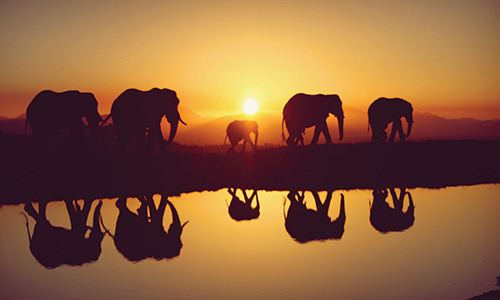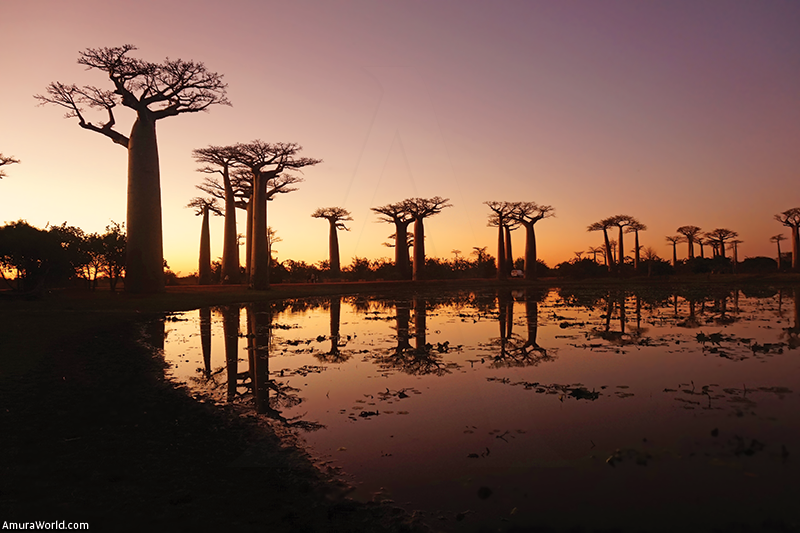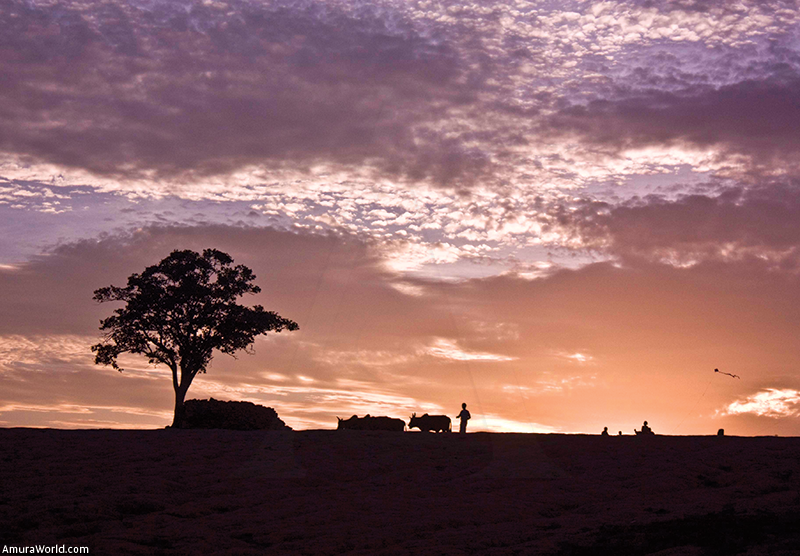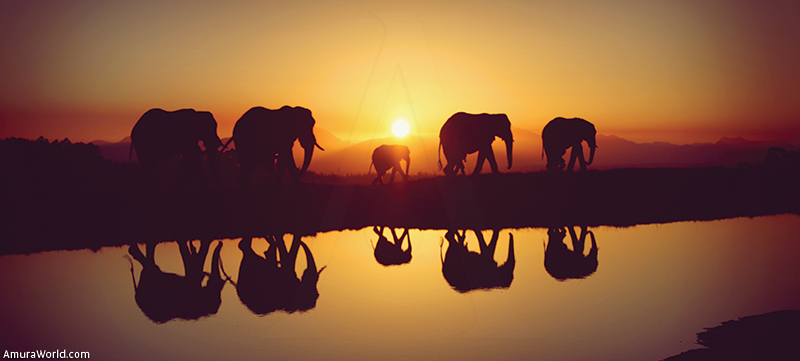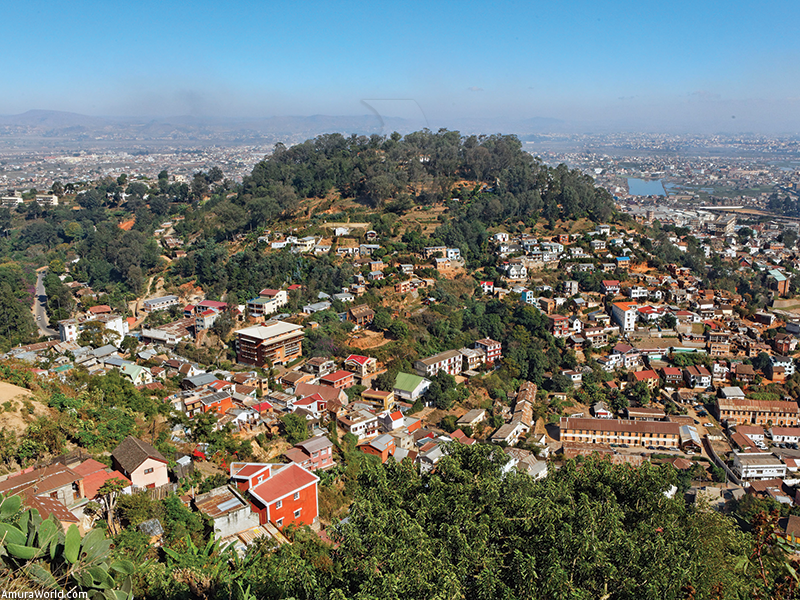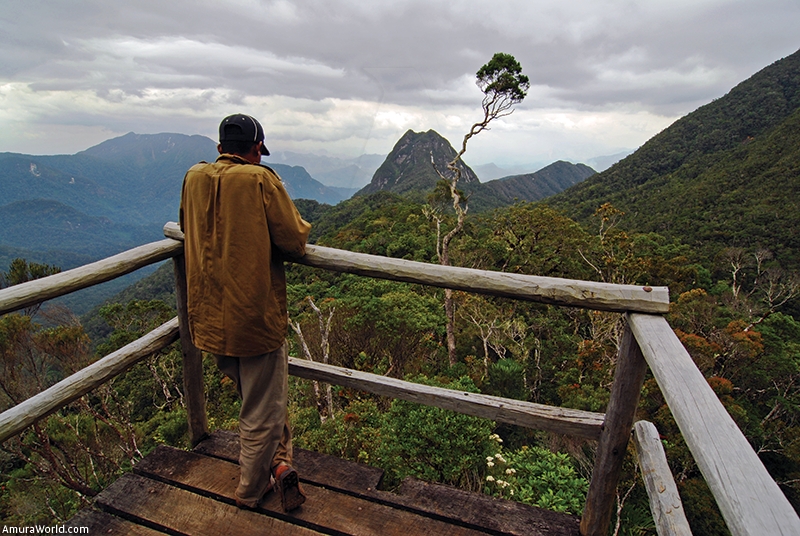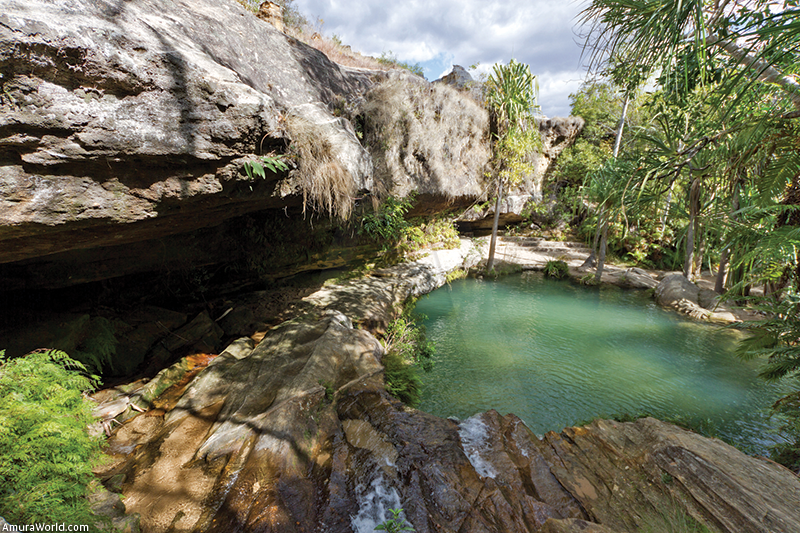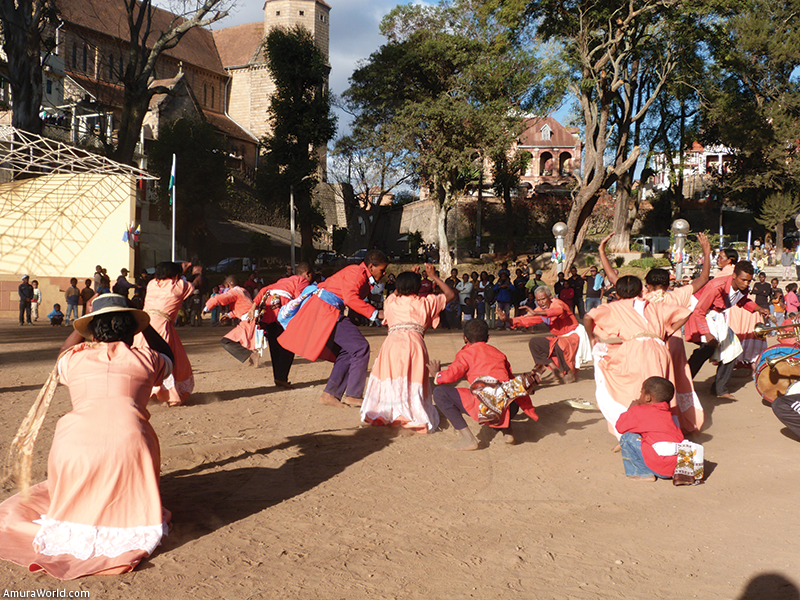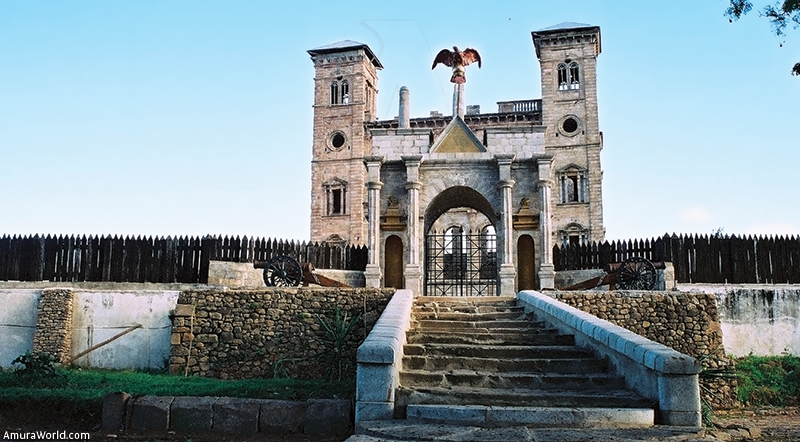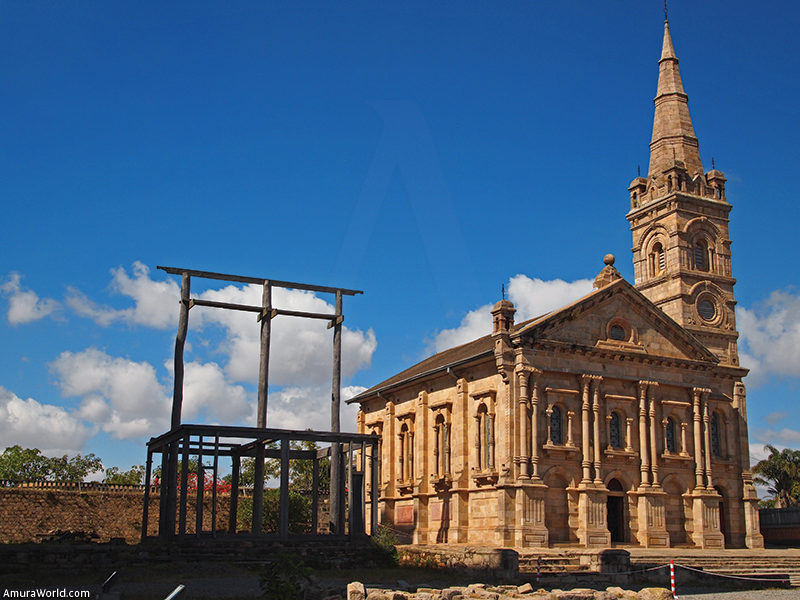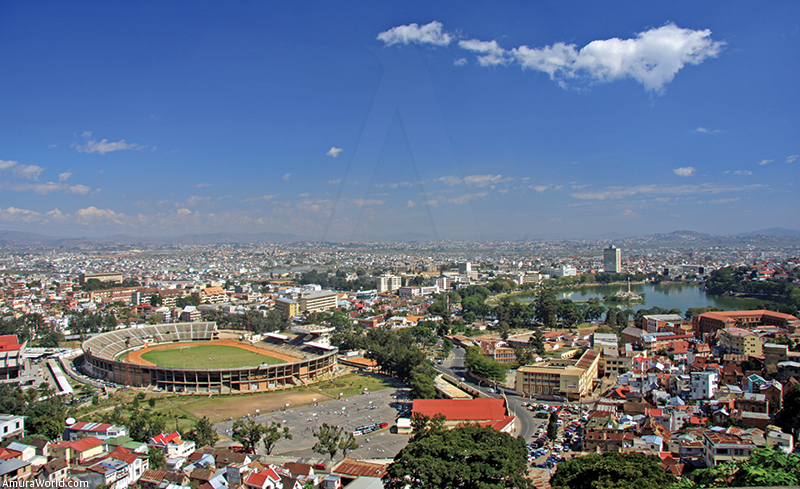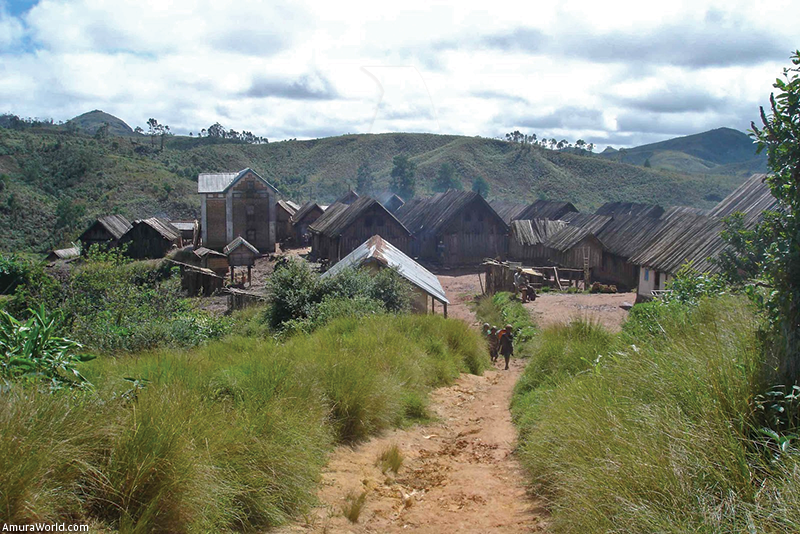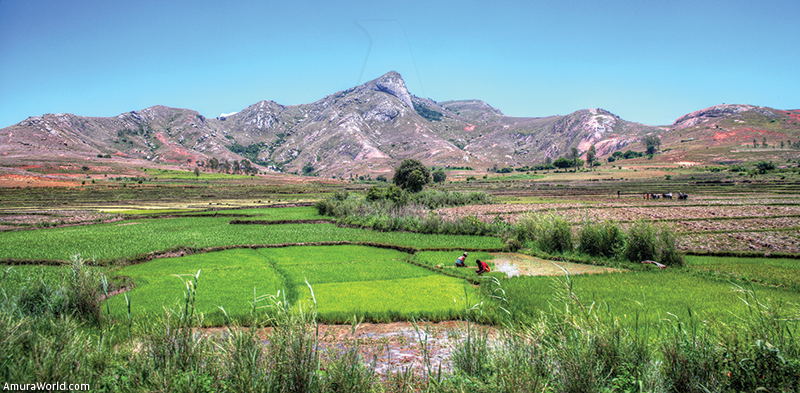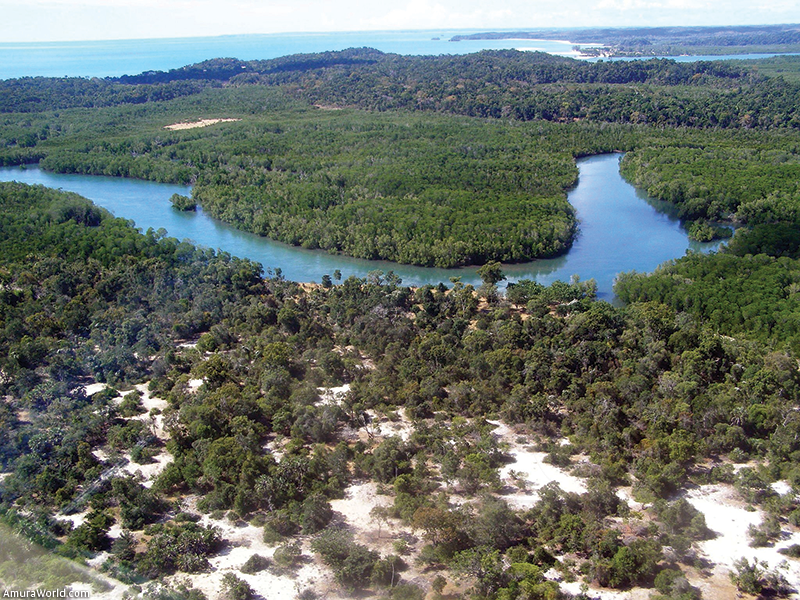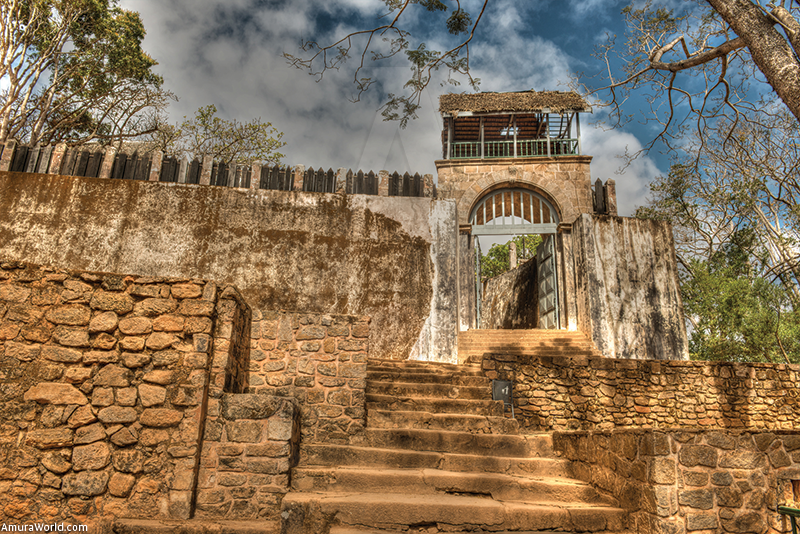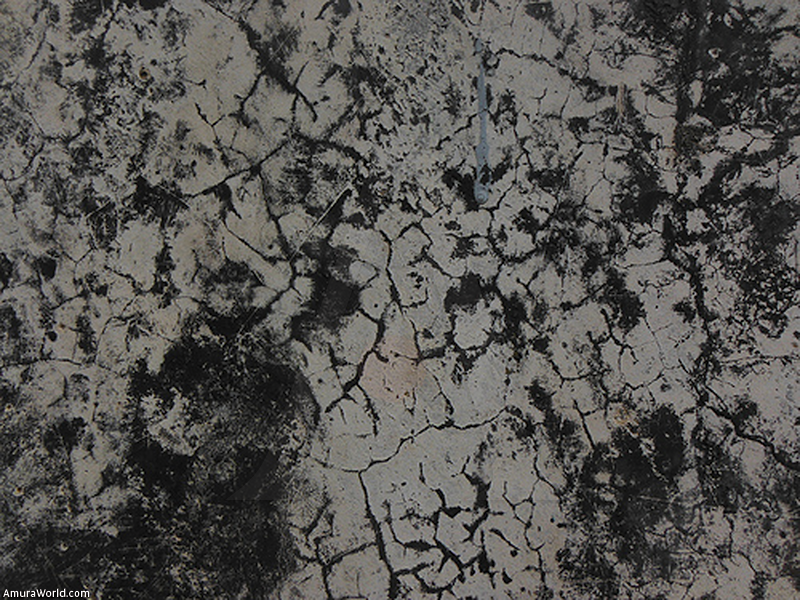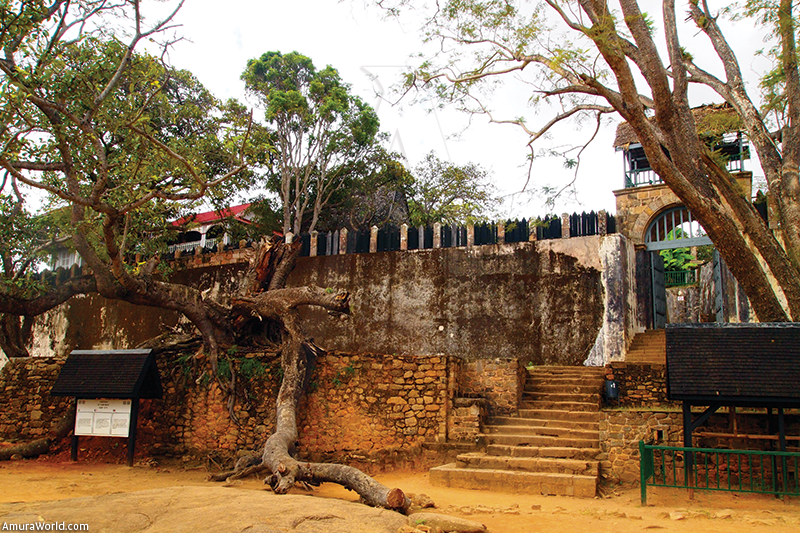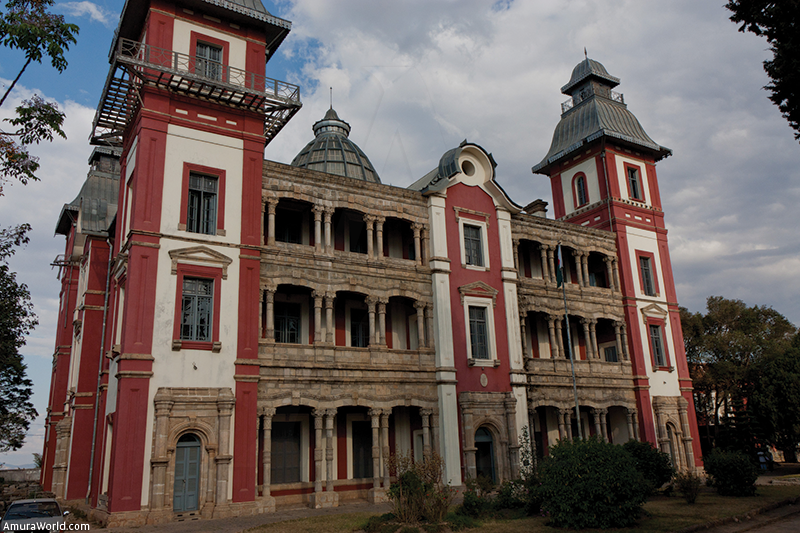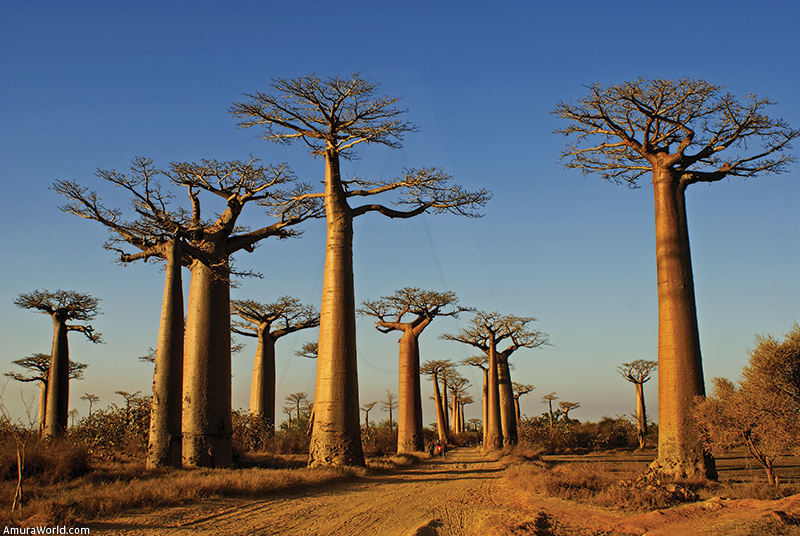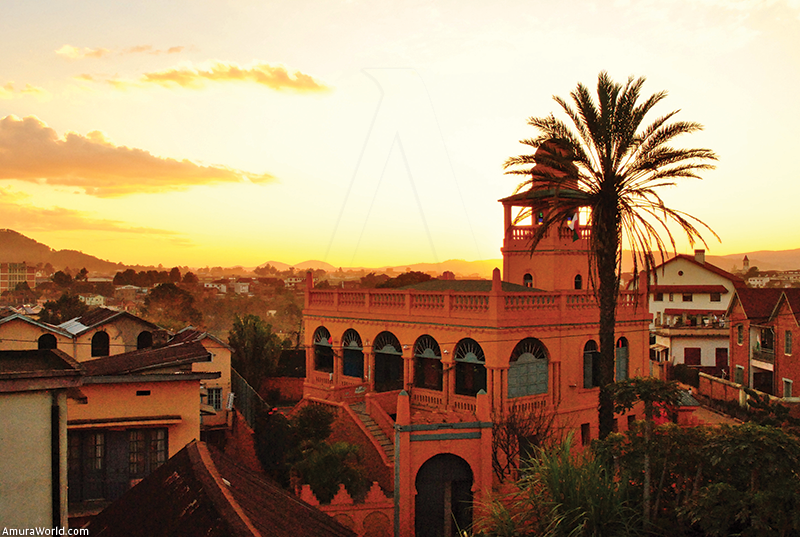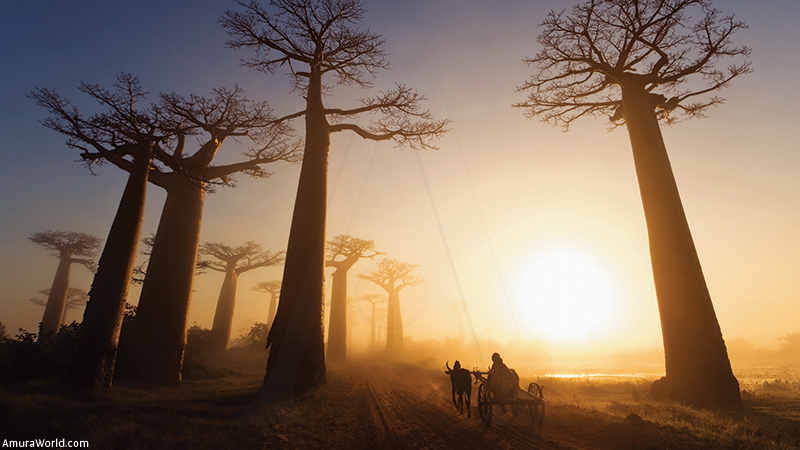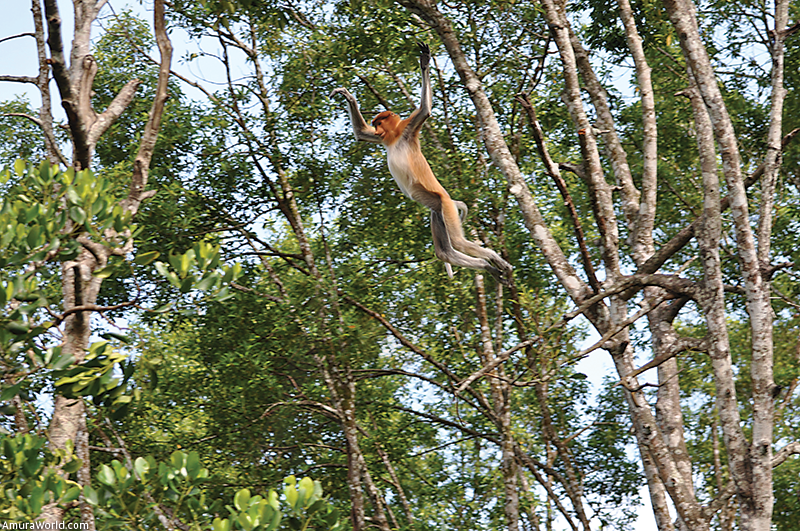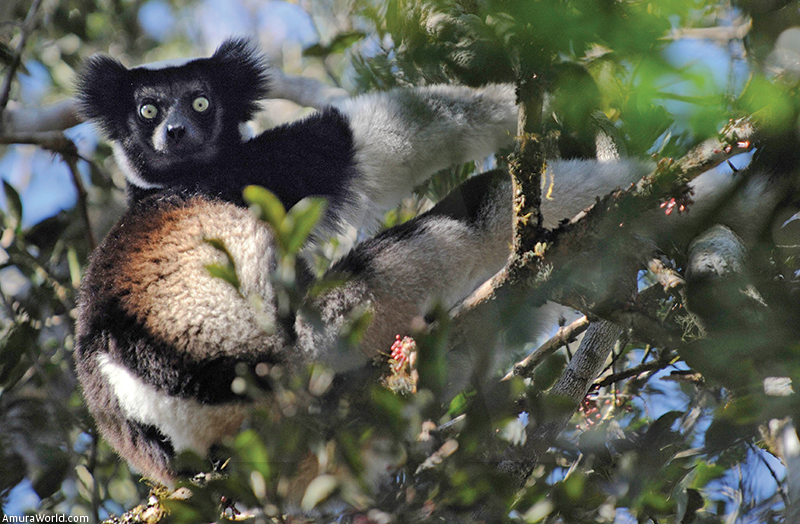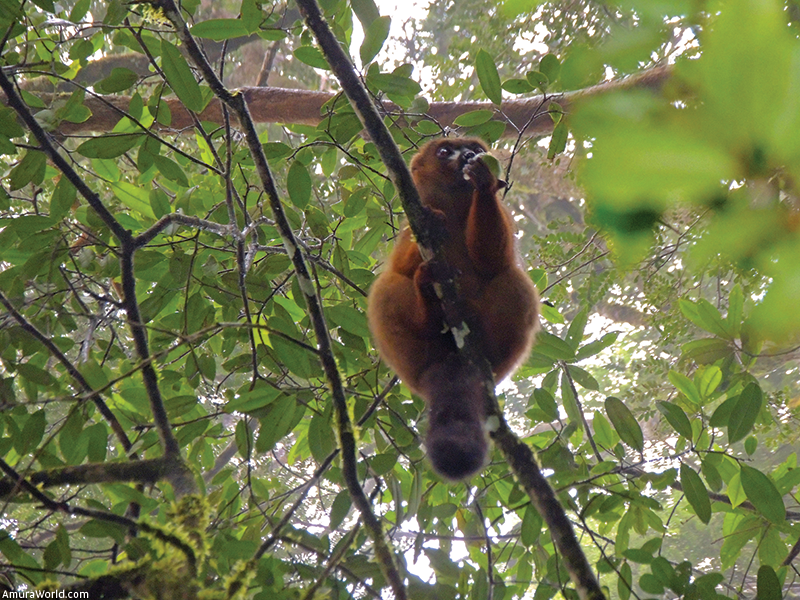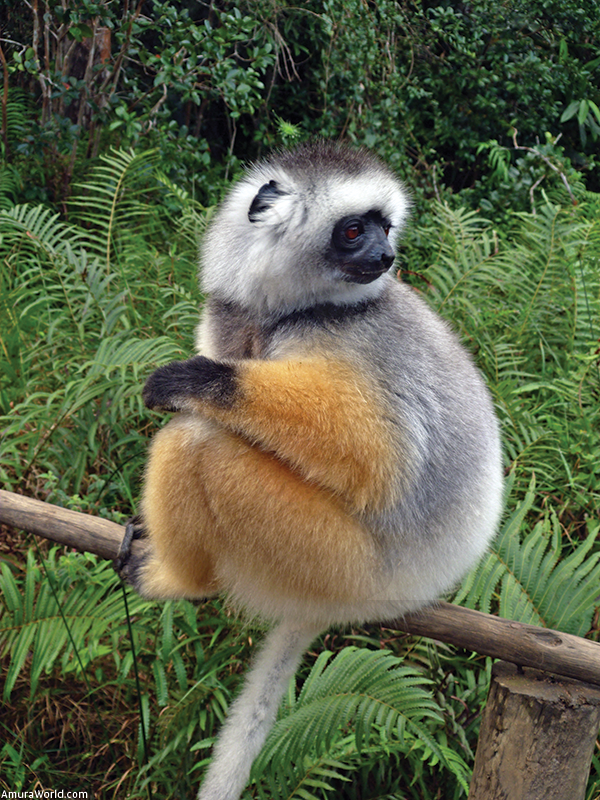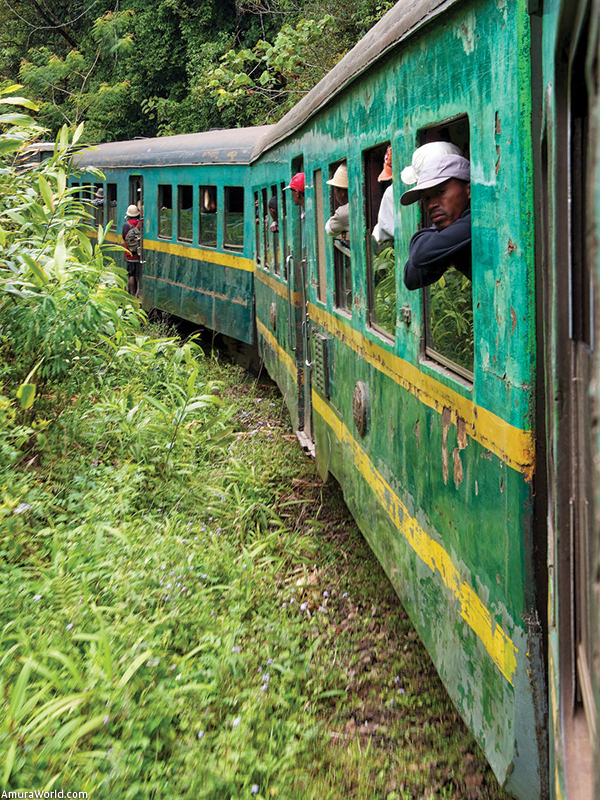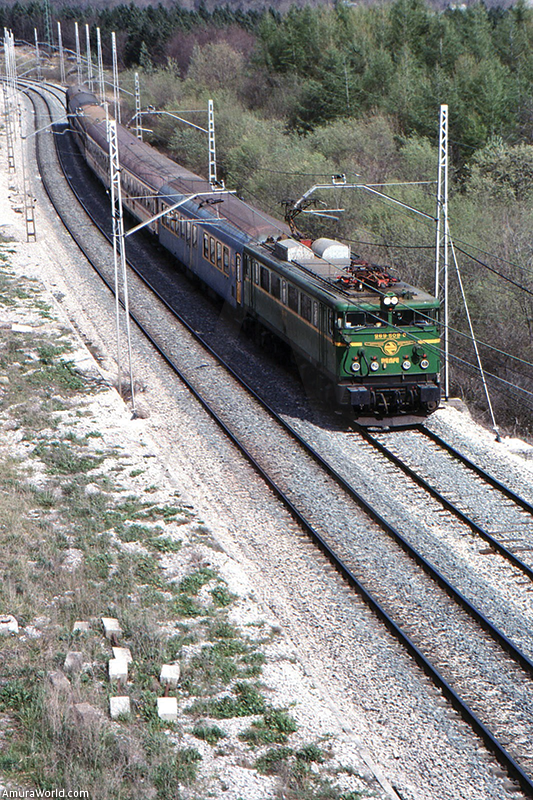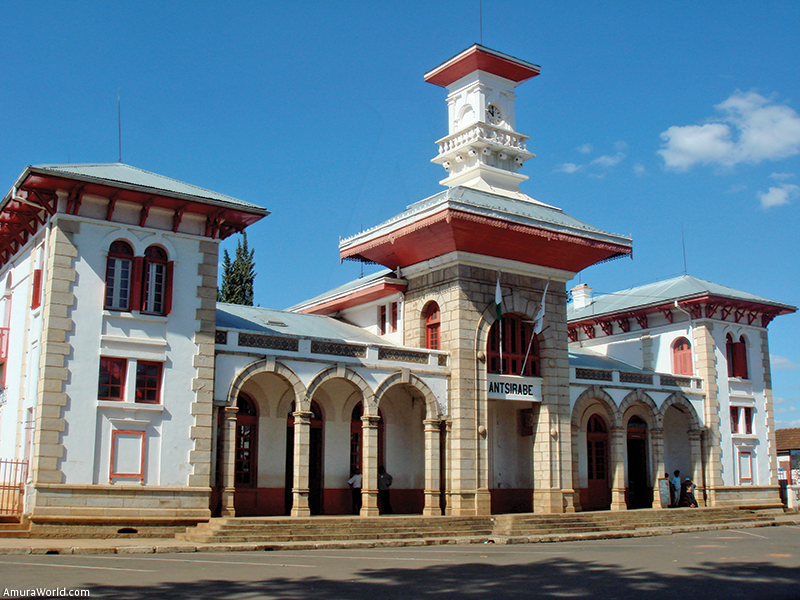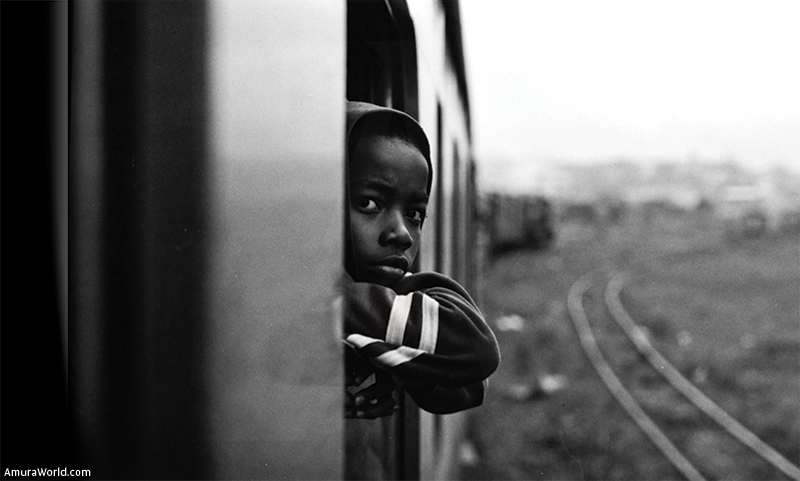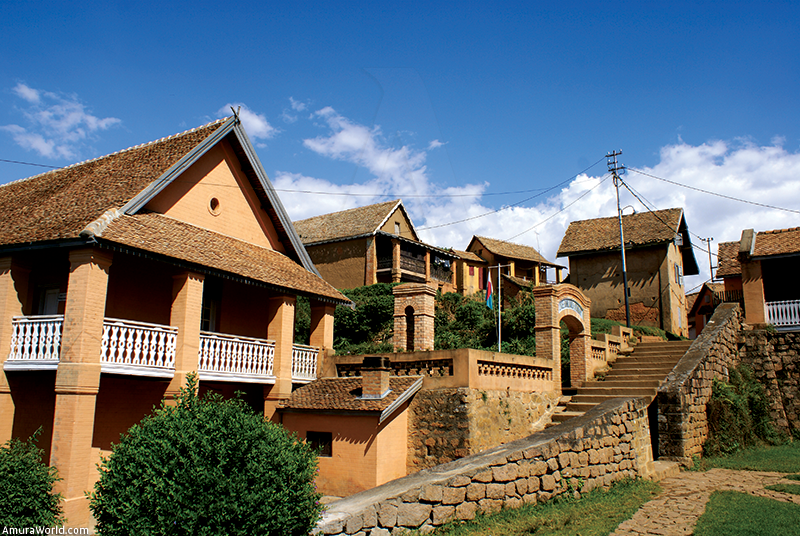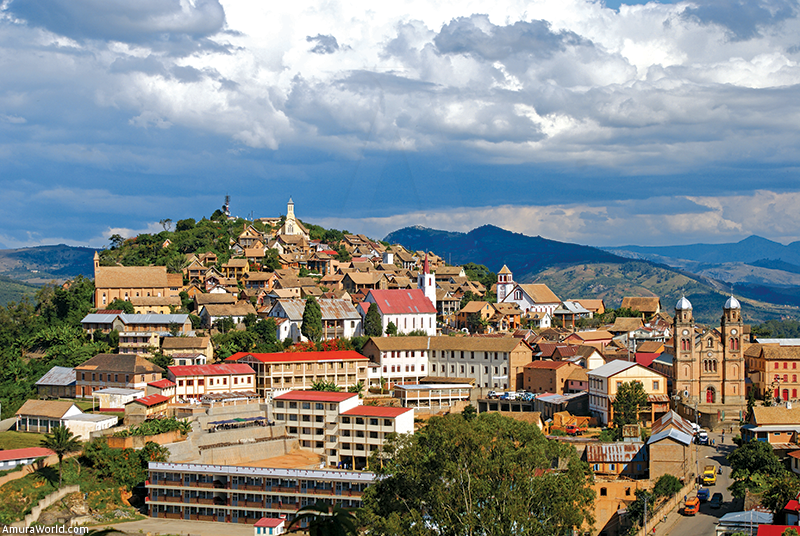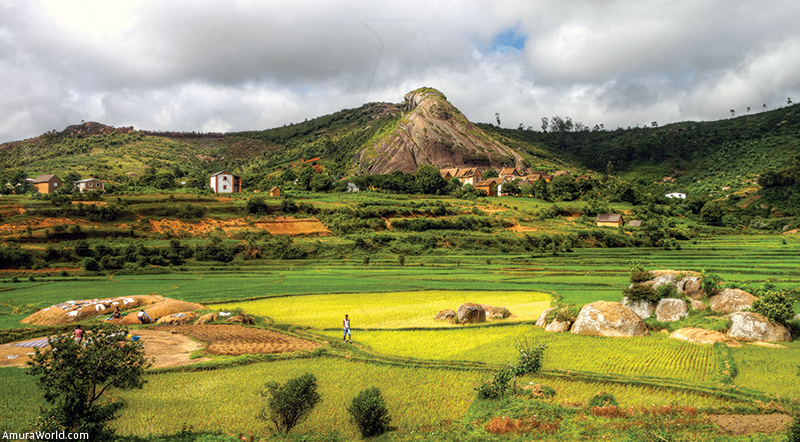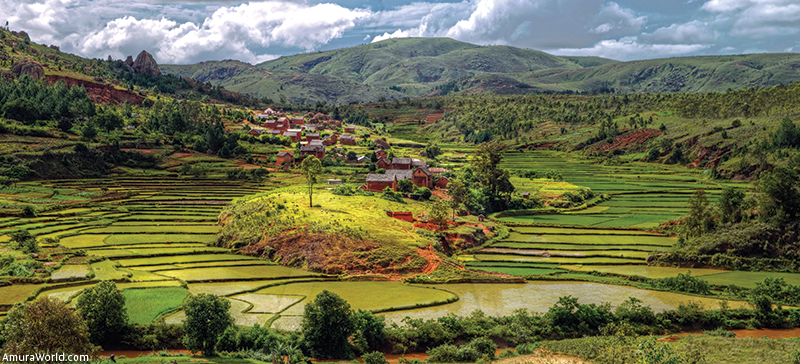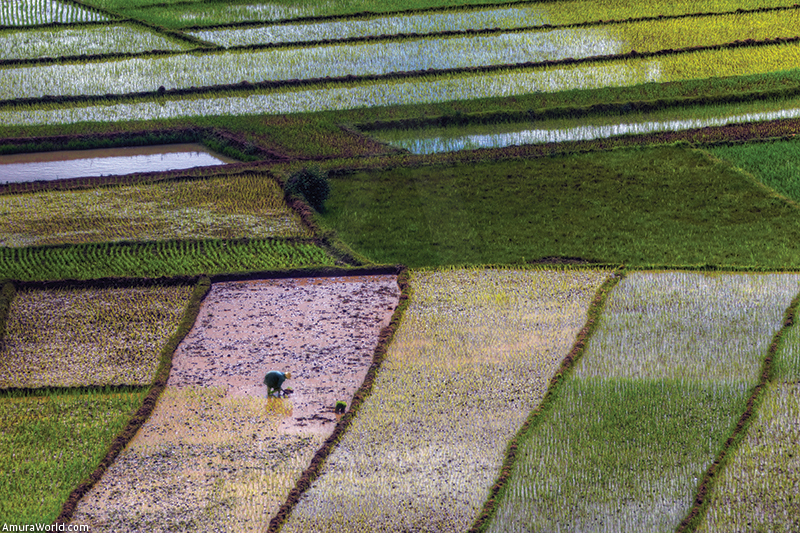An ancient adventure Origin and unique diversity
The tale tells that, in the past, Earth was inhabited by only one being, a very intelligent artisan called Ratovona. This greatly inventive man spent his time making things up with pieces of wood and clay. In order not to be alone, he created a wide variety of clay figurines in his image and likeness. One day, Zanahary (the founder of the popular Malagasy religion) went down to visit him and, after a philosophical discussion, the deity gave aina (life) and fanahy (soul and spirit) to the clay silhouettes that were scattered everywhere. It did not take them long to move and become living human beings; then Ratovona granted them wisdom and knowledge. At the end, Zanahary added: “you will keep the body you have created and I will pick up his aina and fanahy”.
It is said that, because of this, when men die, the aina, the same as the fanahy, go to heaven in order to encounter Zanahary, while the body stays on Earth because it has been created from clay.
This is the cosmic vision that tells the story of Ratovona and the first men, of the Merina ethnic group, from the people of Antananarivo, current capital of Madagascar, the largest island of Africa and the fourth biggest in the world.
Named by the first explorers as “The lost continent”, it shelters the widest endemic flora and fauna diversity of the planet, and due to the separation of this island from the continental land, 12,000 years ago, the species inhabiting it evolved in a unique way.
Traces of the first inhabitants of this big island date from the second half of 600 D. C.; investigations made past century establish the theory that towards the III century, the first Malaysian-Polynesian seafarers went through 8,000 km of ocean, and arrived in the African coast, once and once again until the V century, bringing about the prevailing mix of African ethnic groups; which is why its tongue is Malagasy and not Bantu –the language of its closest peoples in the African Continent. In the period between 1301 and 1450, Arab, Comoro, Yemenite and Somali traders established ports in the northern region of the island, which were destroyed by the arrival of the Portuguese who were guided by conqueror Diogo Dias; nevertheless, having found no gold, ivory or spices, the Lusitanians lost interest in the island.
Antananarivo
Speaking about Antananarivo means to refer to the central High Lands, located between two quaint 1,000 m height hills, representing three quarters of Madagascar surface. In them, the Merina live, the ethnic group that unified the country in the XIX century. These territories are a compendium of colors such as it is expressed in the Malagasy flag: the white of the rice, the green of the rice fields and the red of the soil. Its many and cozy parks, magnificent nature and rice terraces make it the most colorful and alluring city of the island; while its fairy tale palaces, and museums make it incomparable for the travelers willing to enjoy the almost mythical beauty guarded by the ancient buildings.
On the other hand, a promenade through more than 20 markets and malls deserve a special attention, being for the relics searchers the best option.The most popular is in the Avenue de l’Indépendance, downtown’s heart, leaving from Soarano station, reminding the French colonization times with its buildings with their gorgeous tall piazzas. Recently renovated, the Avenue de l’Indépendance is a succession of banks, hotels and shops; it is also reckoned as one of the largest markets in the world. Here one can find clothing, shoes, jewelry, food and, of course, souvenirs and tourist articles.
For shopping lovers, it is recommended they visit the Analaqueli and Andruvuhangui neighborhoods, the flower market and the national handicraft center.
In terms of culture, the Hira gasi theater is the place where the best concerts are presented; renowned artists from Malaysia perform dance, poetry, music and theater, with unique and passionate representations. Among architectural and historical monuments, it stands out the Rova Ambohimanga set of palaces, archeological site located 40 km from Antananarivo, declared World Heritage Site by the UNESCO in 2001. It is formed by the Monarchs’ tomb and the ruins of the Royal City, and the Palace of the President; the same as various holy places where many pilgrims attend, among them the Antuhumadinika mosque; besides the Archeology Museum and the Mahamasina stadium.
Every one of these constructions tells a particular story and lead the visitor to a remembrance of the passages lived through past centuries. Built over the highest hill of Antananarivo, the royal citadel shelters the Merina monarchy tombs, temples and palaces ever since the XVII century. Ever since 1995, date in which arson wiped out this power symbol, the Rova has been restored.
The different oriels give us terrific views, being one of the most beautiful of them, the Tana rice plantations.
Nature lovers may visit the surroundings and tour in the premontane, walk up the high hills and watch the exceptionally gorgeous mountain creeks.
The little palaces, nowadays sprawled over the High Lands, are natural shelters for a great diversity of wild species. Such is the case of the antique property abode of queen Ranavalona, near Alarobia lake, in which naturalists are at awe when they admire the diverse species of herons, little egrets and common kingfishers, flying around this mid-city oasis.
Tsarasaotra, a private park, is a Ramsar habitat supported by the WWF.
The blue hill
The Ambohimanga citadel (“the blue hill”) a Unesco World Heritage Site, lodges palaces and forts of the last Merina monarchy dynasties. This is a royalty’s fortification and necropolis, located 20 km from Antananarivo, Madagascar capital city, preserved as an Imerina cultural icon because it was a residence of that dynasty.
Also, this town is invested with a sacred character and closely linked to the sense of national identity; this site is object of veneration among the population about five centuries ago and still is today, a place of worship to which pilgrims from entire island of Madagascar and elsewhere. One peculiarity is that it has the only wall in the world built with eggshell.
The Palace de Andafiararatra
It has been used as headquarters, court, fine arts school and official residence; today it lodges the Rova’s artistic collections such as royal objects, pictures, jewels, among others. It is an astounding fortress built in 1872 for Rainilaiarivony, prime minister of Madagascar from 1864 to 1895, who had succeeded his older brother Rainivoninahitriniony; the latter had been in office for thirteen years. His career reflects his father’s, Rainiharo, a renowned military who became prime minister during the reign of queen Ranavalona I. In spite of having had a childhood marked by ostracism from his family, young Rainilaiarivony was raised to a great authority and trust position in the royal court, serving with his father and brother. At 24, together with Rainivoninahitrioniony, he co-led a critical military expedition and was promoted army commander in chief after the queen’s death in 1861.
In this position, he oversaw continuous efforts for keeping the royal authority in Madagascar peripheral regions and worked as his brother’s counselor who had been promoted to prime minister in 1852. He also influenced to transform the government from an absolute monarchy to a constitutional kingdom in which power was shared between the sovereign and the prime minister. In 1864, Rainilaiarivony and queen Rasoherina worked together to depose Rainivoninahitriniony due to his power abuse. Having taken his brothers place as president of the government, Rainilaiarivony held power during the following 31 years when he married the three queens in the series, Rasoherina, Ranavalona II and Ranavalona III.
As first minister, Rainilaiarivony actively strove for the modernization of the State administration, aiming at protecting Madagascar from the political design of the British and French colonial empires. Even if held in high esteem, the French colonial authority deposed the prime minister and exiled him to the French Algeria, where he died less than a year later, in August, 1896.
Mother tree of Mankind
The baobabs (literally, Mother of the Jungle) are majestic, multiform, imposing trees, raising solitary in the monotone savannah landscape; sprawling all over Sub-Saharan Africa. Their longevity, often millennial (there have been dated baobabs older than 3,000 years), makes them present in the tales of the man’s creation; they reach a 30 m height and their trunk a 14 m diameter.
In Africa there exist the six of the seven species of baobabs (the other one grows in Australia); being unique the adansonia grandidieri, exclusive from Madagascar, famous because it grants life to the impressive “Avenue of the Giant Baobabs” of Morondava.
In the Nuer mythology, the baobab is considered the mother-tree, fact that the American naturalist Peter Matthiessen records in one of his 1972 narrations: “I imagine a great baobab thrust up like an old root of life in those wild grasses that blow forever to the horizons.” (An African trilogy, Peter Matthiessen, Random House). Its reputation might come from its capability to hold water (more than 6,000 liters), being a source of water during draught, factor that allowed the expansion of the nomad peoples over the most barren zones of Africa. Even more, women pick up the tree seeds, rich in proteins and oils, make flour with them and then cook several dishes; the fresh leaves are eaten in salads, and the bark supplies them with calcium and fiber for making ropes and nets.
Additionally, the tree of life generates extra supplies: from the beehives installed in its trunks and branches, the tribe gets honey; also the trees attract nightly creatures such as bats and galagos (little primates) to pollinate its flowers. However, some peoples consider that these animals attract the spirits and that is why they believe the baobabs are homes of their antecessor’s souls.
Enigmatic inspiration
The Alley of Baobabs is a corridor extended over the road from Morondava to Belon’i Tsiribihina, in the Menabe region, west Madagascar; famous in the world for the striking landscape that lures travelers from all around the world, making it into one of the most visited places in the region. In 2007, this conservation area started to be under the temporary status of protected reservation, an effort from the Ministry of Environment, Waters and Forests.
Renala trees, (in Malagasy, “mother of the jungle”) are a legacy and memento of dense tropical forests that some time in the past throve in Madagascar; many of which are 1,000 years old; nevertheless, in spite of the efforts for its conservation and of being considered a Madagascar living country monument, the zone lacks the character of national park, and that is why it is been threatened by the deforestation that rice fields and sugar cane plantations generate, besides the forest fires. Despite its popularity as tourist destination, the zone has no gates or costs for visiting, and therefore the local residents receive little revenues from tourism.
This sacred tree, sign of fortitude and prosperity for Malagasy people, has an enigmatic aspect and invites to free imagination, as Antoine de Saint-Exupéry did: he used the baobab as one of the characters of his masterpiece The Little Prince.
The legend of the Lost Continent
Speaking of Madagascar implies the legend of Lemuria, the lost continent. In 1860, William Thomas Blanford, an English geologist and naturalist, found similarities among the types of rocks present in South Africa and Madagascar Island with South India. Rocks corresponding to the Permian were practically identical in both continents separated by more than 5,000 km; after deeper studies, he came up with the theory of a possible existence of a land connection –today, a lost bridge—that linked both continents. It was at the same time when the Darwinist biologist Ernst Heinrich Häckel was seeking for an explanation of the lemurs presence with similar features in Madagascar and in Asia.
When he found out Blanford’s theory, he took it as an explanation of how come two so similar species were evolutionally so far in space. Four years after the first Blanford’s theory, zoologist Philip Lutley Sclater suggested the name Lemuria for this hypothetical land bridge between both continents, title that obtained along the years.
Blanford, Häckel and Sclater’s theory explained how come this land bridge would have been an ancient continent that, because of earthquakes and other natural disasters’ effects, had ended submerged under the ocean waters. Based on that, they managed to explain the geological similarities while, at the same time, theorized about a lemur ancestor in Madagascar and Asia, that might have populated this lost continent, thus keeping Darwin’s Evolution Theory as valid.
Lemuria’s story and mysticism brought about deeper theories on the lost continent, even astounding histories such as the one that Madame Blavatsky left in 1875, in her literary piece Dzyan, in which there were a great number of new myths, supposedly rescued from the annals of history.
Malagasy Express
A way to see Madagascar and fully relish it, from the astonishing landscapes of its High Lands to the majesty of its coastline, is by taking a trip on board of the Malagasy Express, descending from Fianarantsoa up to the Manakara coast.
This locomotive, once a bit forgotten, currently represents one of the best options to start contacting the nature and local people. The train is part of the “white heritage”, as the locals call the legacy left by the monarchic dynasties, the same as the modernization occurring in the island during the XX century. The express was born originally as a commodities transport, and even though its activity as tourist transportation allows it to continue functioning, it keeps part of the purpose from its conception; for besides being a liaison for a great many number of communities that otherwise would be isolated, it supplies them with basic goods for their subsistence, and it is the commercial intermediary among them.
The traveler, ready to make the tour in the Malagasy Express must be aware that the speed does not matter, and consider that it is a more historical than modern transportation means, because its start is slow.
Once moving, the train slowly glides through the high lands rice fields; in some stations the stops last more than an hour for there is lots of activity in the commodities wagons, loading and unloading by hand, it is surprising the number of bananas they move. The surrounding environment is characteristic of all communities that are far from the great districts: their inhabitants crowd aside the train offering their merchandises, fruits, drinks, snacks, or expecting some gift from the traveler.
When going down, the locomotive now suffers to brake but as an exchange it gives away a magnificent view of the jungle and the plains near the sea to its passengers. Little by little, the locomotive enters the jungle, and in the first stops the train is used to getting full of local passengers, mainly. Along the run, it will be losing passengers. The last kilometers of the trip, near the airport, occur simultaneously with the sunset, which means to relish the colorful horizon until arriving in Manakara.
In order to build the railroad, more than 5,000 Chinese workers were used; many of them suffered from malaria and dysentery, dwindling the labor, which provoked that the construction of the railroad infrastructure, started in 1925, lasted more than 10 years to be finished entirely; even some people used to say that it would never go through the jungle.
Though the tourist might feel safe by traveling around these latitudes, it is necessary to consider that some of the foreign ministries of several European countries, recommend their citizens not visiting some of the southern regions due to the risk of violence that happened in the past.
Text: Ana María Morales ± Photo: Office Nationale du Tourisme de Madagascar / NETDNA / MDG ST / AFRICAN FUSION / APS / WPS / TOURISME EN AFRIQUE / WPD / NANCY RODRIGUEZ / MARIUSZ KLUZNIAK / YIMG / Flickr / OMS / MY PHOTO DUMP/ BEATMOND / THE STATE / TF SMITH / AMAZONAWS / VP / ELIAS CR / MARIUSZ KLUSNIAK / TOURISM ST

